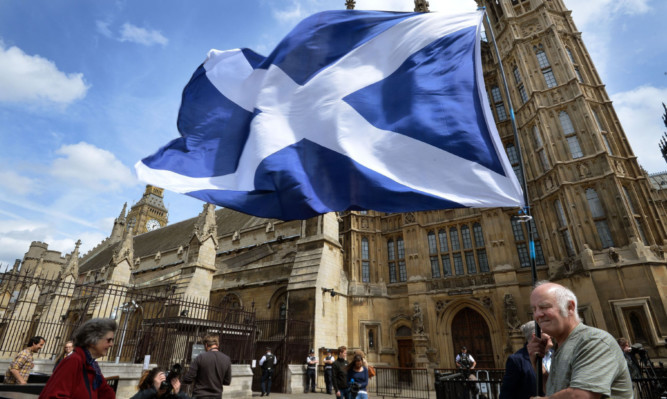Plans unveiled to devolve more powers to the Scottish Parliament fall short in “almost every area”, Nicola Sturgeon has claimed.
The UK Government hit back after publishing the Scotland Bill, saying the Bill would make Holyrood one of the most powerful devolved parliaments in the world.
Much of the controversy surrounded the First Minister’s insistence that vetoes were in place which could block attempts by the Scottish Government to exercise the proposed new powers.
Key elements in the new settlement include: allowing Holyrood to set thresholds and rates of income tax on earnings in Scotland and keeping all the money raised in Scotland; giving the Scottish Parliament control over the first 10 percentage points of standard rate VAT revenue raised in Scotland; new welfare powers worth £2.5 billion; enabling the Scottish Government to vary the frequency of Universal Credit payments; providing power to set the rules over a range of benefits which affect carers, disabled people and the elderly.
UK ministers say this will make Holyrood responsible for raising around 40% of taxes.
It was based on the cross-party Smith Commission, which agreed the next stage of Scottish devolution.
Ms Sturgeon said: “The Bill, for example, doesn’t contain the full welfare powers recommended by the Smith Commission and in some key powers it retains, unbelievably in my view given the amount of concern that was expressed about this, it retains a veto for the UK Government on key policy areas.
“So, for example, if this parliament wants to abolish the bedroom tax, as I hope we do, the UK Government would still have a right of veto over whether we could do it or not. Now I’m sorry, but that is not devolution.”
A Scotland Office spokesman said it was “factually wrong” to claim there are vetoes in the Bill, adding: “This is reciprocal in a number of areas of the Bill, UK Government ministers must also consult Scottish Government ministers in taking decisions.”
Scottish Secretary David Mundell said: “We made a promise to turn the all-party Smith Commission agreement into law and we are now doing that at the earliest possible opportunity.
“The onus is now on the Scottish Government to start telling people in Scotland what they are actually going to do with these new powers.”
A Scottish Government spokesman failed to rule out rejecting the Bill even if it is amended after Deputy First Minister John Swinney said SNP MPs could table amendments calling for full fiscal autonomy.
Asked by The Courier if Ms Sturgeon would accept the Bill in full if it replicated Smith, he said: “The point the First Minister has made consistently in the last couple of weeks is that the election result is an overwhelming mandate of the manifesto provisions of more powers above and beyond Smith.”
Labour’s Shadow Scottish Secretary, Ian Murray, said his party would campaign for Holyrood to have the “final say on welfare and benefits”, while Scottish Liberal Democrat leader Willie Rennie said the Bill is an opportunity to move past the divisions of the independence referendum.
